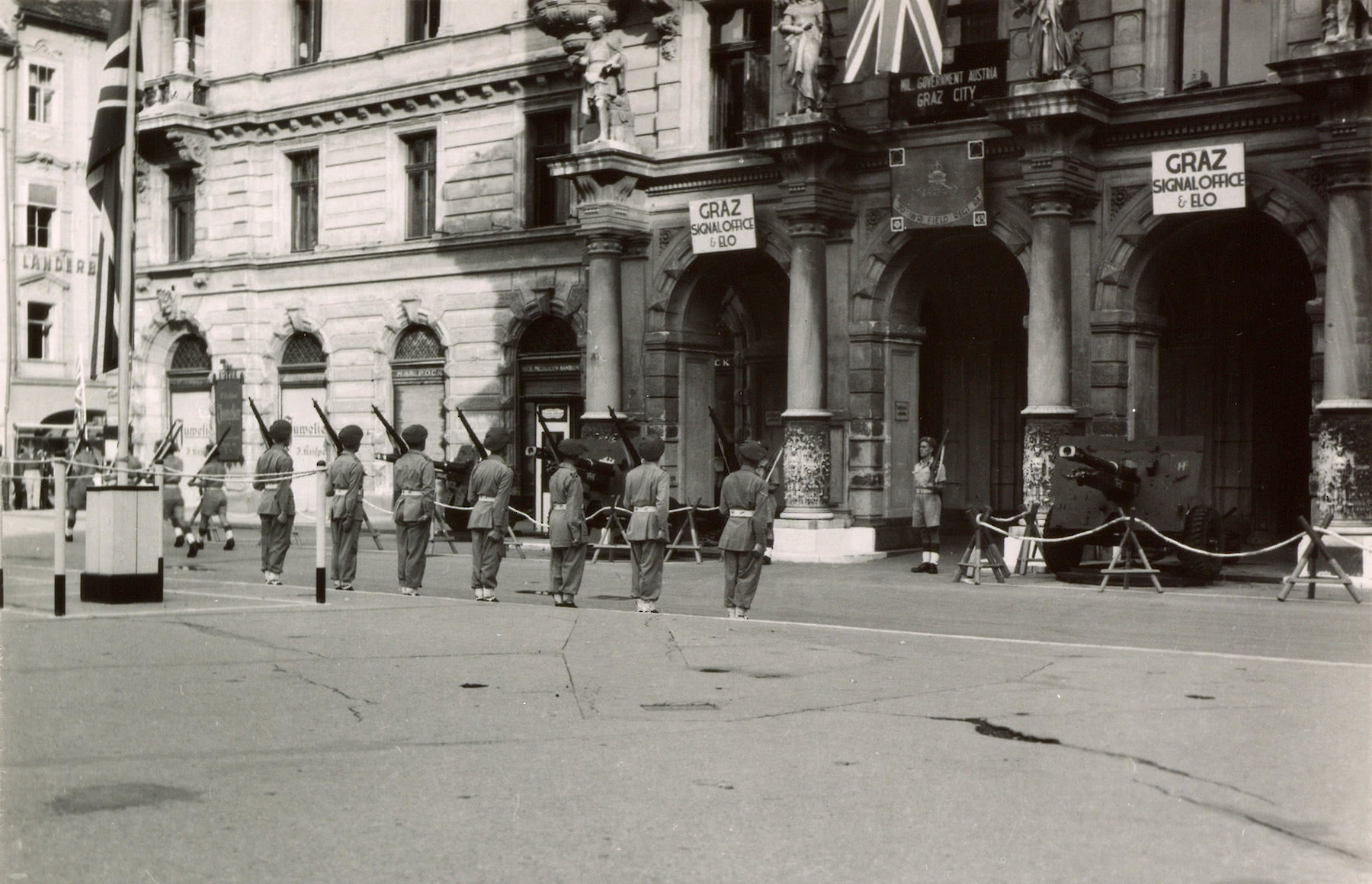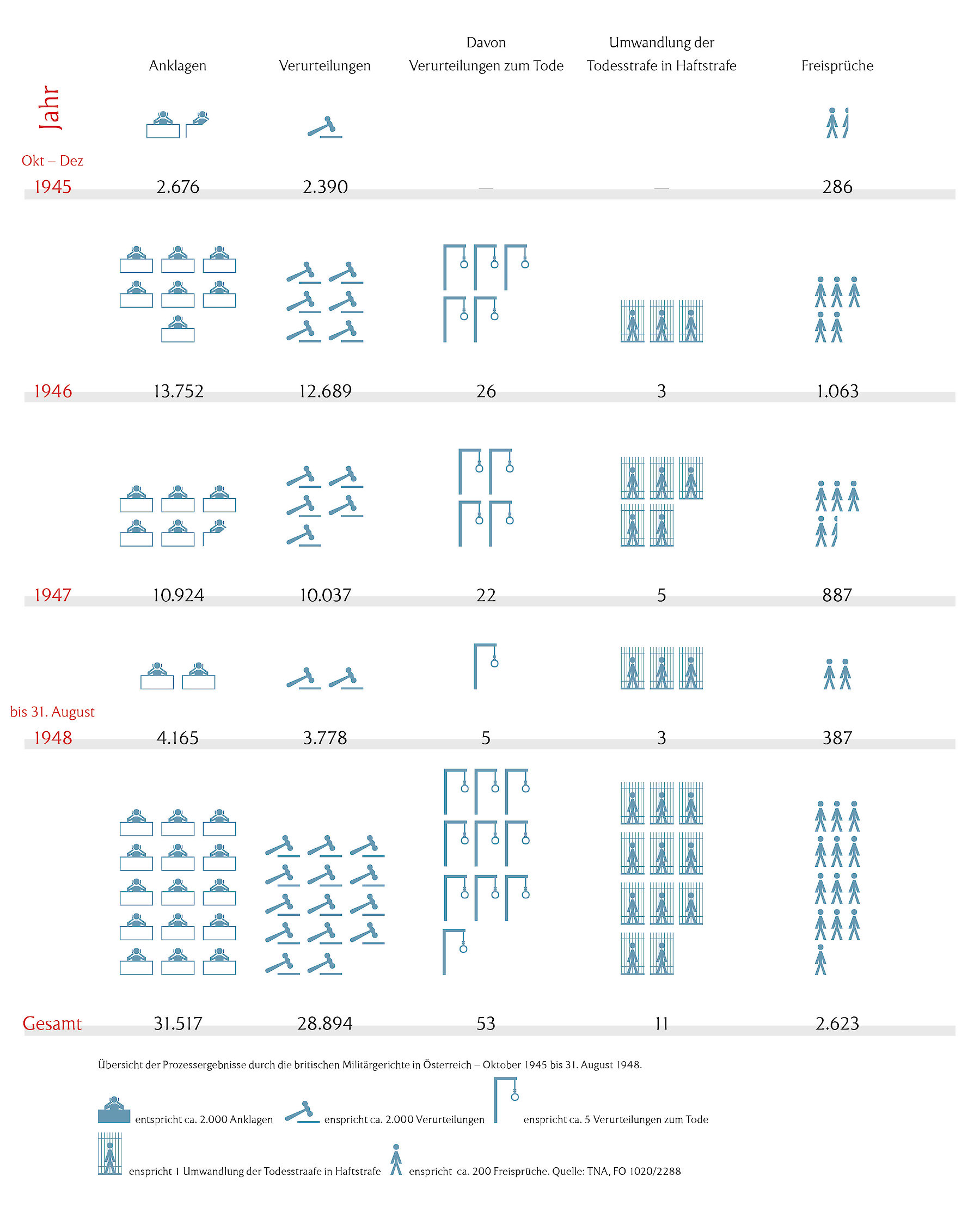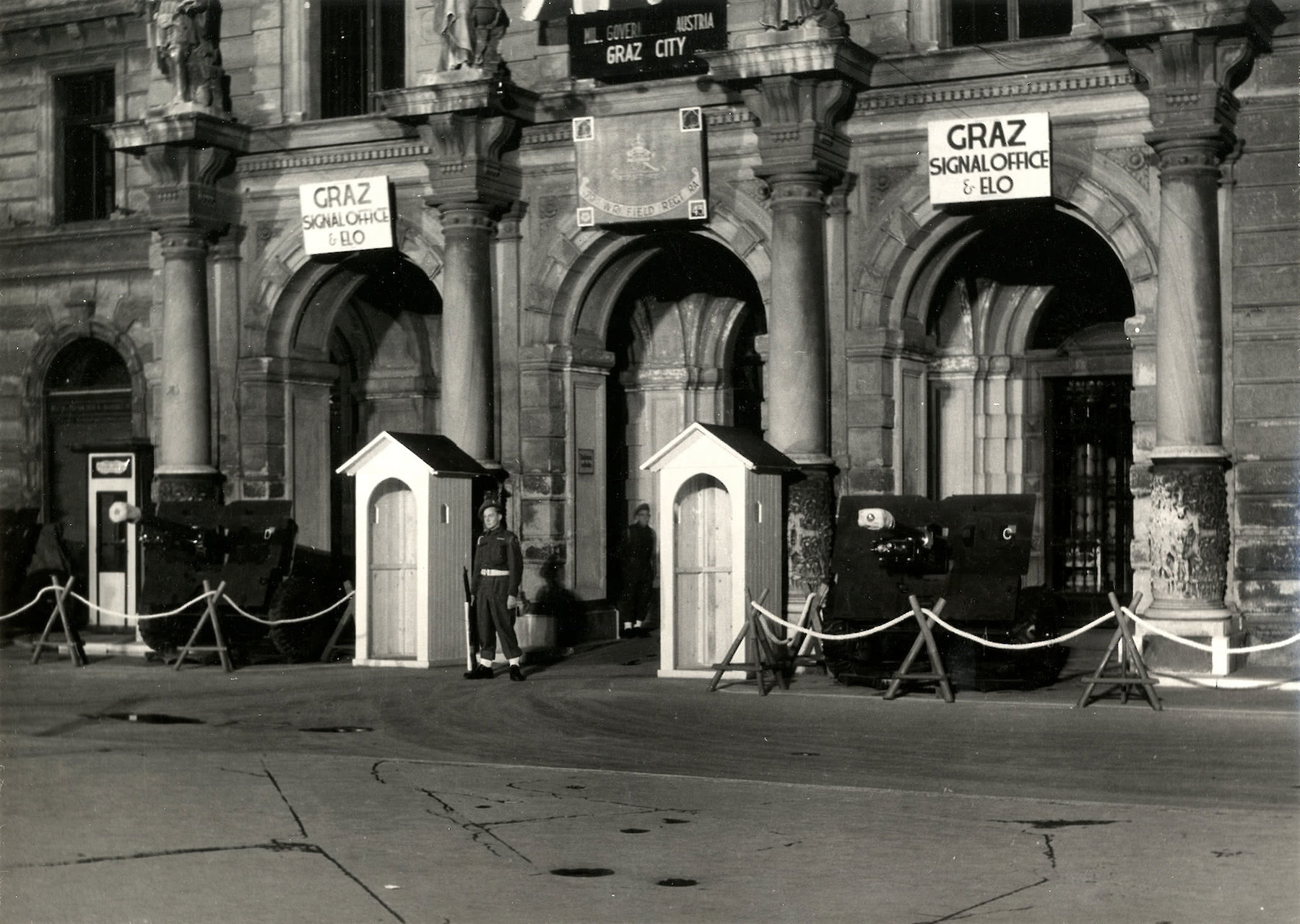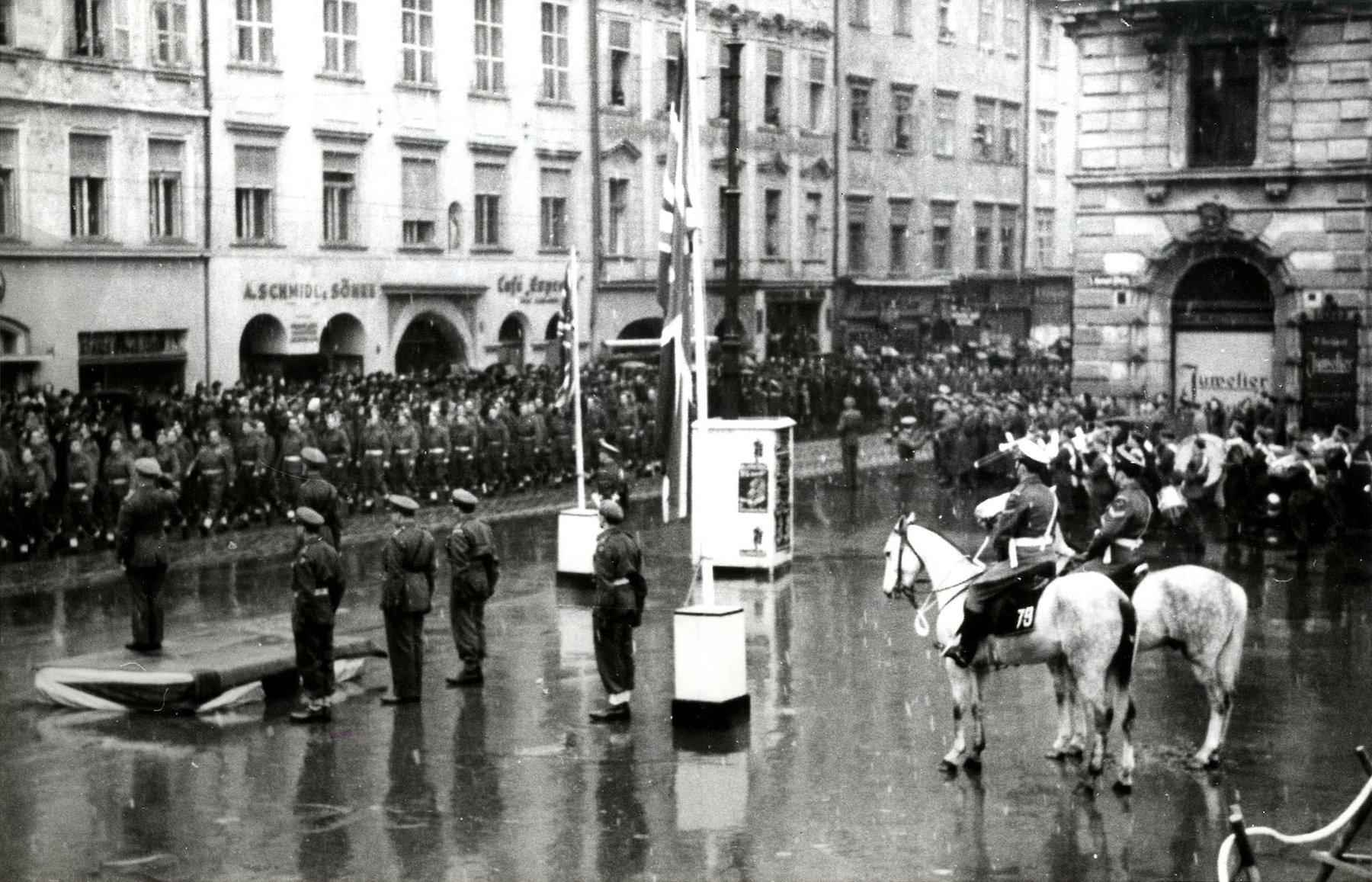

British Members of the Occupying Forces on the Main Square Eugen Hauber, 1945–1955
The Second Occupying Power
After the end of the Second World War, Graz was at first occupied by Soviet troops. In July 1945, British troops took over Styria, after the “Allied Control Agreement for Austria” and the “Agreement on Zones of Occupation in Austria and the Administration of the City of Vienna” had come into effect. Graz City Hall hosted the British headquarters. With the troops, cultural offerings (concerts, film screenings, radio) and Western consumer goods (“NAAFI shops“) came too. Building up administrative structures, providing the most necessary supply, prosecuting former National Socialists and throwing light on their crimes were the most important issues.
BW photograph
13 × 17,5 cm
Graz Museum
Denazification in Styria
The graph on the British military court trials shows the statistical evaluation of denazification. In addition to securing the borders of the country and the occupation zones, the British also carried out a more thorough denazification as from October 1945 (in the executive branch, administration and judiciary) as well as the legal prosecution of high-ranking Nazi functionaries and solution of Nazi war crimes (above all the “death marches” of the Hungarian Jews) in Styria. Since most of the judges, state attorneys and lawyers had been members of the NSDAP, the British exercised legal control (oversight and review of trials, modification of judgments). In April 1948 denazification in Austria came to an end through the so called “Amnesty of Less Incriminated Offenders” decided by the National Council: about 500,000 people were rehabilitated.



